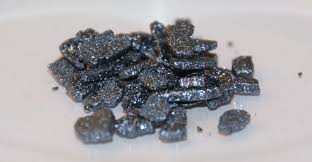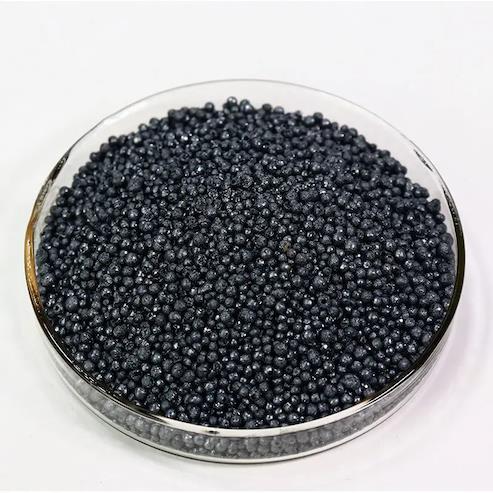Iodine-Hazard and Toxicity
Description
Iodine is widely distributed in nature and it exists in the form of compounds. There are traces of iodine in rocks, soil, water, flora and fauna and air. But in addition to seawater, the distribution of iodine in nature is very uneven.
The iodine in the environment is present in the form of a compound, and the iodine compound is mostly soluble in water and transferred with the flow of water. The leaching effect of precipitation takes away the iodine in the soil, and it flows into the river and lake, eventually into the sea. Therefore, iodine in seawater is the most abundant and stable.

Seawater is known as a "iodine library" with iodine concentration of 50~60μg/L. A portion of the iodine in the sea enters the air through evaporation, with about 400,000 t of iodine entering the atmosphere each year. The iodine lands in the form of rain (snow), which is iodine cycle in the nature.
Toxicity Data
LD50 oral (rat) 14,000 mg/kg
LCLO inhal (rat) 80 ppm (800 mg/m3; 1 h)
PEL (OSHA) 0.1 ppm (ceiling, 1 mg/m3)
TLV-TWA (ACGIH) 0.1 ppm (ceiling, 1 mg/m3)
Major Hazards
Iodine vapor is highly toxic and is a severe irritant to the eyes and respiratory tract. Exposures to iodine cause very serious health effects and poisoning. The symptoms of toxicity and poisoning include, but are not limited to, salivation, excessive tearing, swellingof eyelids and salivary glands, metallic taste, irritation of the eyes, skin, nose, and throat, lacrimation, headache, cough, sore throat, tight chest, an allergic skin or respiratory reaction, and pulmonary edema. It also causes pain, burns, blurred vision, rash, skin hypersensitivity, joint swelling and pain, defi ciency of thyroid hormones -iodism, fever and enlarged lymph glands.
Exposures cause a burning sensation in the throat, abdominal cramps, vomiting, diarrhea, shock (in larger doses), and affects the cardiovascular system and the CNS. Babies and children need iodine to form thyroid hormones, which are important for growth and health. Excessive iodine from the mother causes adverse effects to the baby’s thyroid gland; the gland becomes so large that it makes breathing diffi cult or impossible. Also low levels of iodine from the mother can cause a baby to produce insuffi cient thyroid hormone, disturbing the growth and mental development of the growing baby.
Toxicity
The acute toxicity of iodine by inhalation is high. Exposure may cause severe breathing difficulties, which may be delayed in onset; headache, tightness of the chest, and congestion of the lungs may also result. In an experimental investigation, four human subjects tolerated 0.57 ppm iodine vapor for 5 min without eye irritation, but all experienced eye irritation in 2 min at 1.63 ppm.
Iodine in crystalline form or in concentrated solutions is a severe skin irritant; it is not easily removed from the skin, and the lesions resemble thermal burns. Iodine is more toxic by the oral route in humans than in experimental animals; ingestion of 2 to 3 g of the solid may be fatal in humans.
Iodine has not been found to be carcinogenic or to show reproductive or developmental toxicity in humans. Chronic absorption of iodine may cause insomnia, inflammation of the eyes and nose, bronchitis, tremor, rapid heartbeat, diarrhea, and weight loss.
Flammability and Explosibility
Iodine is noncombustible and in itself represents a negligible fire hazard when exposed to heat or flame. However, when heated, it will increase the burning rate of combustible materials.
Reactivity and Incompatibility
Iodine is stable under normal temperatures and pressures. Iodine may react violently with acetylene, ammonia, acetaldehyde, formaldehyde, acrylonitrile, powdered antimony, tetraamine copper(II) sulfate, and liquid chlorine. Iodine can form sensitive, explosive mixtures with potassium, sodium, and oxygen difluoride; ammonium hydroxide reacts with iodine to produce nitrogen triiodide, which detonates on drying.
Storage and Handling
In particular, safety goggles and rubber gloves should be worn when handling iodine, and operations involving large quantities should be conducted in a fume hood to prevent exposure to iodine vapor or dusts by inhalation.
Accidents
In the event of skin contact, immediately wash with soap and water and remove contaminated clothing. In case of eye contact, promptly wash with copious amounts of water for 15 min (lifting upper and lower lids occasionally) and obtain medical attention. If iodine is ingested, obtain medical attention immediately. If large amounts of this compound are inhaled, move the person to fresh air and seek medical attention at once.
In the event of a spill, sweep up solid iodine, soak up liquid spills with absorbent material, place in an appropriate container, and dispose of properly. Respiratory protection may be necessary in the event of a large spill or release in a confined area.
Disposal
Excess iodine and waste material containing this substance should be placed in an appropriate container, clearly labeled, and handled according to your institution's waste disposal guidelines.
You may like
Related articles And Qustion
Lastest Price from Iodine manufacturers

US $0.00-0.00/kg2025-04-21
- CAS:
- 7553-56-2
- Min. Order:
- 1kg
- Purity:
- 99.99%
- Supply Ability:
- 20 tons

US $0.00-0.00/kg2025-04-21
- CAS:
- 7553-56-2
- Min. Order:
- 1kg
- Purity:
- 99.99%
- Supply Ability:
- 20 tons




